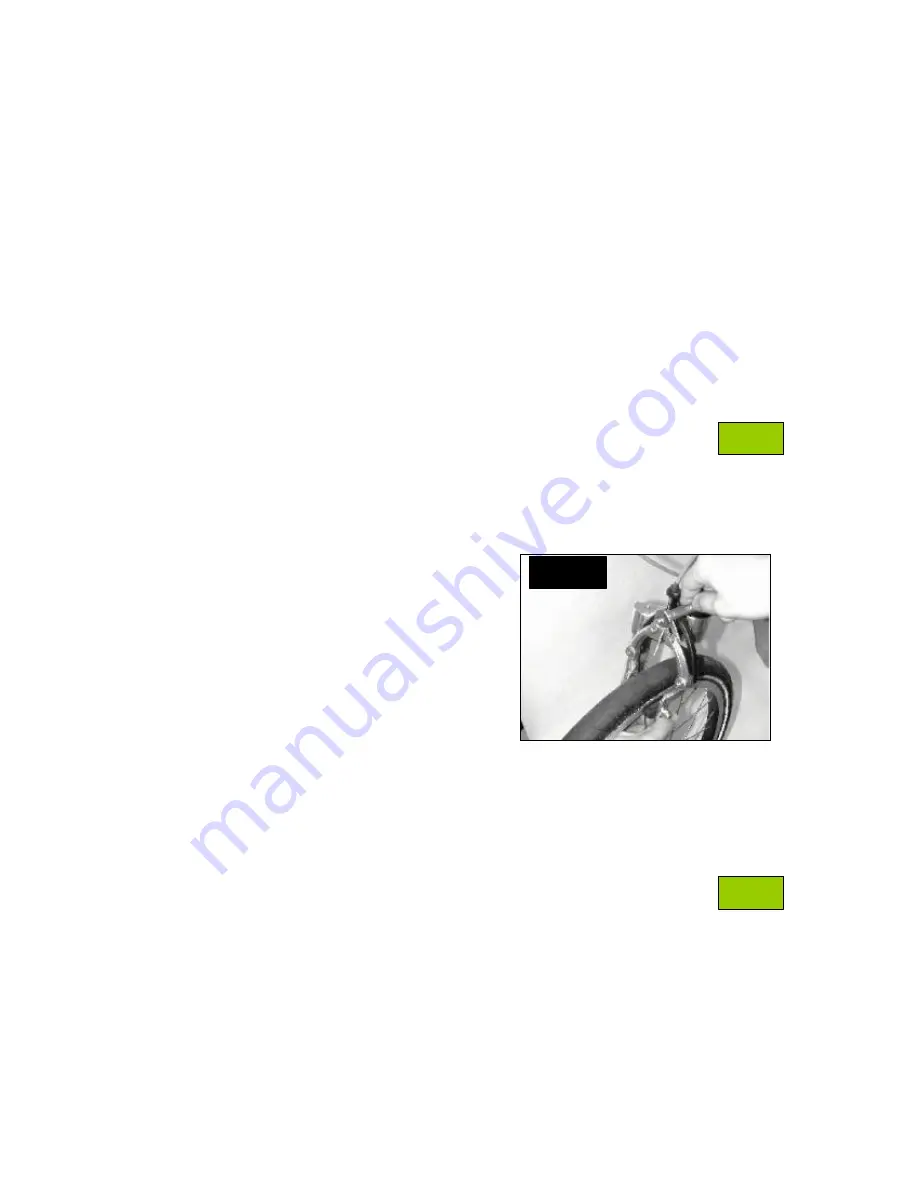
7
5
RIDING SAFETY AND RESPONSIBILITY.
By choosing to ride a bicycle, you assume the responsibility for that risk.
5.1 Before you start a ride.
a. Always do the Safety Check (Section 4) before you ride your bike.
b. Always wear a cycling helmet that meets the latest European standard.
c.
Be thoroughly familiar with the controls of your bicycle.
d. Wear bright visible clothing that is not so loose that it can catch on moving parts of the bicycle or be snagged
by objects at the side of the road or trail.
e. Don’t jump with your bike. It places far higher stress on all the components, including the frame, than they
are designed to take.
When riding, ride defensively. Allow for other users to make mistakes. Watch out for:
–
Vehicles slowing or turning in front of you or turning onto the road
–
Parked cars opening doors in front of you
–
Pedestrians stepping out
–
Pot holes, drains, railway tracks and other obstructions that could cause you to swerve.
Never carry a passenger, unless it is a child in a proper child seat.
6
HOW THINGS WORK?
6.1 Brake.
A. Front & rear brake.
1. Loosen the fixing bolt with a 10 mm wrench (See fig. A-1), then
adjust the brake pads until the distance between
the brake pads and rim is 2-3 mm, then lock the fixing bolt.
2. Both front and rear brakes can be adjusted in this way.
B. Adjusting your brakes.
1.
If either brake lever on your bike fails the Mechanical Safety Check, you can restore the brake lever travel by
turning the brake cable-adjusting barrel.
2.
First turn anti-clockwise, then lock the adjustment in by turning the barrel’s lock nut clockwise as far as it will
go. If the lever still fails the Mechanical Safety Check, have your dealer check the brakes.
Fig. A-1
INDEX
INDEX













